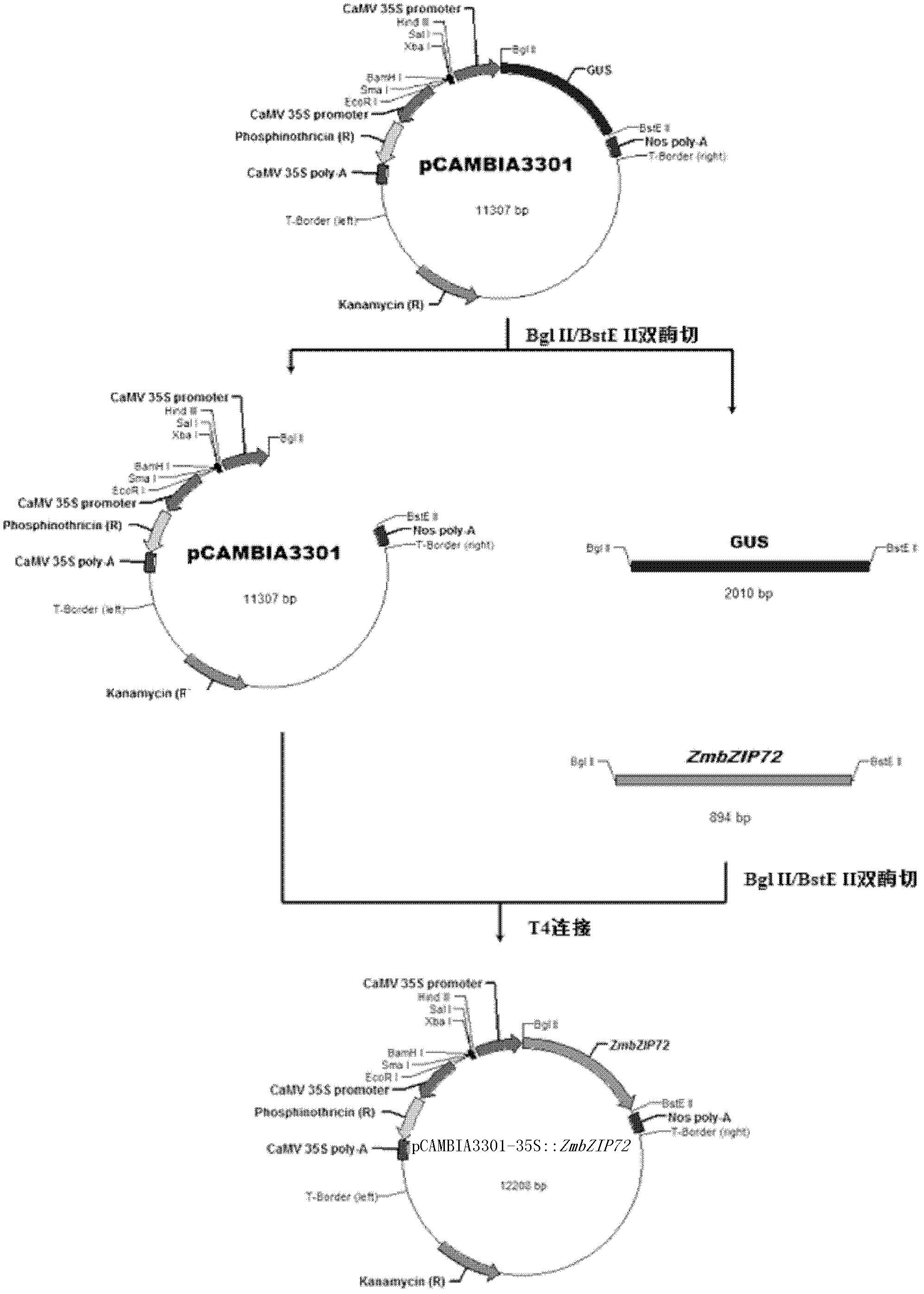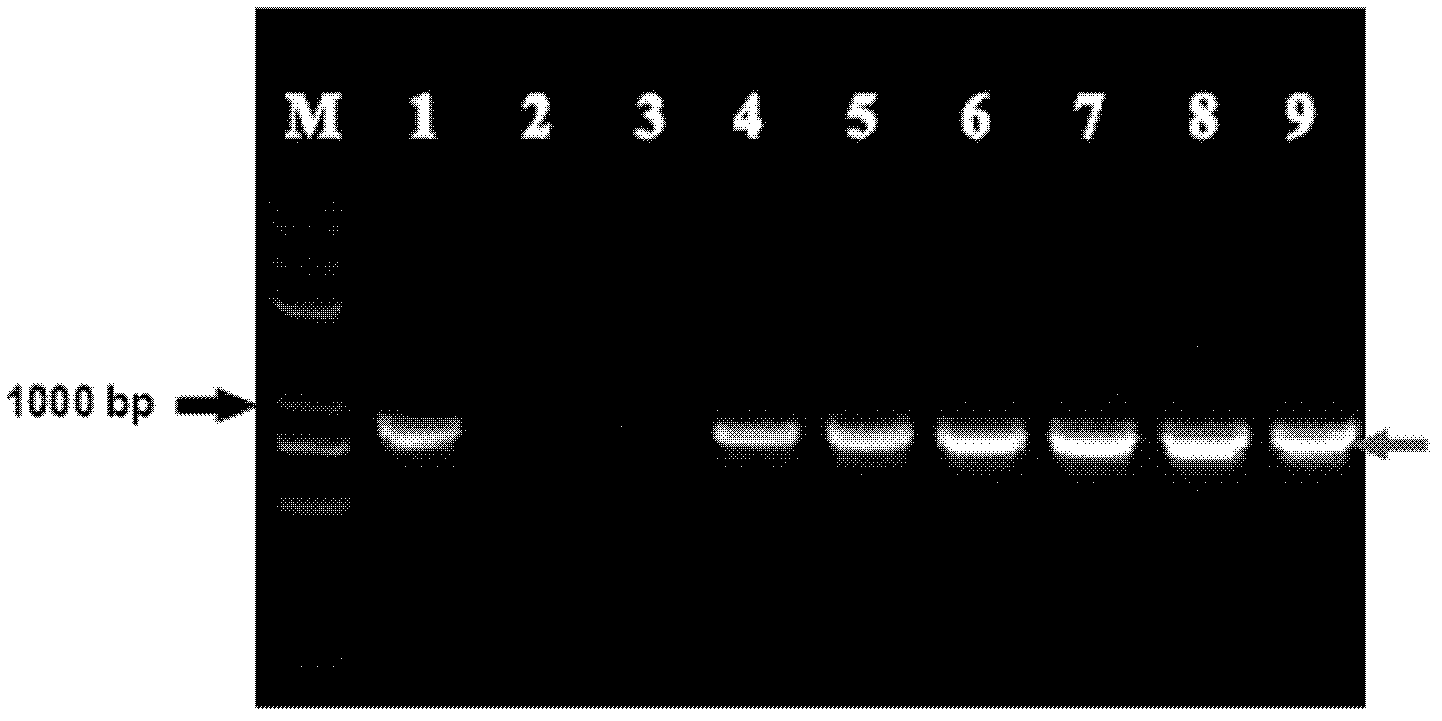Protein related with plant tolerance and coding gene and applications thereof
A technology of plant stress tolerance and related proteins, which is applied in the field of plant stress tolerance related proteins and their coding genes and applications, can solve problems such as the complexity of plant stress resistance mechanisms, achieve broad application and market prospects, and improve drought tolerance Effect
- Summary
- Abstract
- Description
- Claims
- Application Information
AI Technical Summary
Problems solved by technology
Method used
Image
Examples
Embodiment 1
[0040] Embodiment 1, the discovery of ZmbZIP72 protein and its coding gene
[0041] A new protein was discovered from maize variety CN165 through observation of a large number of traits and molecular detection.
[0042] The protein shown in Sequence 1 of the sequence listing is named ZmbZIP72 protein. The gene encoding the ZmbZIP72 protein is named ZmbZIP72 gene, its cDNA is shown in sequence 2 of the sequence listing, and the open reading frame is the 181st to 1074th nucleotides from the 5' end of the sequence 2 of the sequence listing.
Embodiment 2
[0043] Embodiment 2, the acquisition of transgenic plants
[0044] 1. Construction of recombinant expression vector
[0045] The construction flowchart of recombinant plasmid pCAMBIA3301-35S::ZmbZIP72 is shown in figure 1 .
[0046] 1. Extract the total RNA of corn variety CN165 and reverse transcribe it into cDNA.
[0047] 2. Using the cDNA extracted in step 1 as a template, perform PCR amplification with a primer pair composed of F1 and R1 to obtain a PCR amplification product.
[0048] F1: 5'-TTA AGATCT ATGGACGAGCTGCTCCAG-3';
[0049] R1: 5'-TAT GGTCACC TCACCAGGGGGCCGTCAACGT-3'.
[0050] 3. The PCR amplified product of step 2 was double digested with restriction endonucleases Bgl II and BstE II, and the digested product was recovered.
[0051] 4. Digest the plasmid pCAMBIA3301 with restriction endonucleases Bgl II and BstE II to recover the vector backbone (about 9265 bp).
[0052] 5. Ligate the digested product of step 3 with the vector backbone of step 4 to obta...
Embodiment 3
[0067] Embodiment 3, identification of transgenic plants
[0068] 1. RT-PCR identification
[0069] T 3 The total RNA of generation plants was used to identify the expression of ZmbZIP72 gene by RT-PCR. The primer pair identified by RT-PCR consisted of F3 and R3, and the target sequence was about 100bp.
[0070] F3: 5'-GCTTATACAATGGAGTTAGAAGCCG-3';
[0071] R3: 5'-CTCGTTGTTCTGCATTTCCATAATTTC-3'.
[0072] The results of four transgenic lines (TL5-2, TL6-1, TL11-3, TL12-3) are shown in Figure 4 . The results showed that the Colombian ecotype Arabidopsis did not get the expected band, which was identified as a negative result. The plants of the 9 transgenic lines all obtained the expected bands, which were identified as positive results.
[0073] 2. Abscisic acid stress experiment
[0074] The seeds of the transgenic line TL6-1 (T 3 Generation plants), seeds of transgenic line TL12-3 (T 3 Generation plants), seeds of control plants transformed with empty vector (T 3 G...
PUM
 Login to View More
Login to View More Abstract
Description
Claims
Application Information
 Login to View More
Login to View More - R&D Engineer
- R&D Manager
- IP Professional
- Industry Leading Data Capabilities
- Powerful AI technology
- Patent DNA Extraction
Browse by: Latest US Patents, China's latest patents, Technical Efficacy Thesaurus, Application Domain, Technology Topic, Popular Technical Reports.
© 2024 PatSnap. All rights reserved.Legal|Privacy policy|Modern Slavery Act Transparency Statement|Sitemap|About US| Contact US: help@patsnap.com










